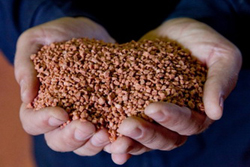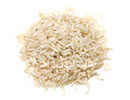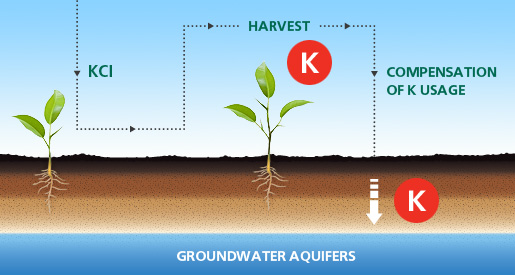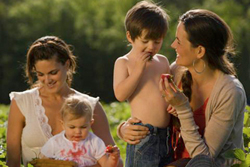- What is Potash?
- K in Plants
- K and Environment
- K in Human Body
What is Potash?

- Potassium is a chemical element with the symbol K
- K is a vital component of all living organisms, essential for their development. Alongside phosphate and nitrogen it is an irreplaceable nutrient for all plants, with no natural or chemical substitutes available. It can be most commonly found within plant cells, with the highest concentration identified in fruits
- The most common type of potash is Potassium Chloride (KCI), also known as potassium salts. Potassium salts such as carnallite, langbeinite, polyhalite, and sylvite form extensive deposits in evaporated ancient lake and seabeds
- Potassium Chloride (KCl) is the most widespread kind of potash fertilizers accounting for 95% of potash used as a fertilizer (muriate of potash)
- Potash is mined from deep underground ore deposits or extracted from brine by means of solution mining, and is then processed on the surface
- There is no natural or man-made substitute for potash
K in Plants
Potassium is a crucial component of many physiological processes, such as growth, photosynthesis, movement, water and nutrient uptake, transmission of signals, the upkeep of turgor pressure, and reproduction. Therefore, potassium deficiency may cause a variety of dysfunctions in the metabolic processes of plants, resulting in decreased productivity and overall quality of the crop yield.
A balanced agricultural crops nutrition can only be ensured by a regular and timely application of potassium.
 Soybeans 8%
Soybeans 8%
Soybeans
- Soy plants growing in potassium-poor soils are often affected by potassium deficiency. At first, the leaf margins turn yellow, and then the yellowing spreads inwards. The centre and base of the leaf remain green
- If the deficiency is not addressed at an early stage, chlorotic areas of the leaf extend into interveinal areas, giving it a ôfishboneö pattern
- Symptoms usually appear first on older leaves. If the deficiency is not addressed the leaf margins eventually die
 Rice 13%
Rice 13%
Rice
- Potassium deficiency in rice is indicated by a number of visible symptoms, such as stunted plants with dark green leaves and short, thin stems, rusty brown spots that start at the tip of leaves and later spread over the whole leaf, dry leaf tips and margins, and a high percentage of rotten roots
- In hot and dry conditions, potassium deficiency can cause premature senescence in older leaves and leaf rolling in younger leaves
- Potassium deficiency can result in a high percentage of sterile or unfilled grains
 Wheat 6%
Wheat 6%
Wheat
- Symptoms of potassium deficiency in wheat crops first appear on lower, older leaves, progressing towards the younger leaves at the top as the severity of the deficiency progresses. A lack of potassium results in discoloration in the tips and margins of wheat leaves as they turn yellow and brown (chlorosis)
- Potassium deficiency in wheat often causes the weakening at the straw, which can result in lodging
 Maize 14%
Maize 14%
Maize
- The leaves of maize plants suffering from potassium deficiency turn yellow at their tips and edges, and then brown, before the discoloration affects the entire leaf and it dies. In sections, nodes are deep brown, different from internodes
- When there is an insufficient level of potassium in the plant organism in maize plants, growth diminishes, roots stop their activity, stems weaken, and the plant is likely to wither
- Potassium deficiency can lead to a malfunction in plant respiration, with plants beginning to use protein instead of carbohydrates. The nitrogen requirements of maize are closely linked to potassium content; potassium deficiency stops nitrogen assimilation
- In dry conditions, potassium-deficient plants soon show signs of wilting, grain growth is reduced and the cobs may be without grain at the tip
 Cotton 2%
Cotton 2%
Cotton
- In plants the potassium ion is mobile. When it is deficient it tends to move from older leaves to newer ones, therefore the first visual symptoms of potassium deficiency can be identified by yellowish-white mottling of older leaves, which later changes to light yellowish-green. Leaves develop yellow spots between veins, their centres die, and numerous brown spots develop at tips and margins between veins. Tips and margins tend to curl downwards. Eventually, leaves become reddish-brown, dry out and fall off prematurely, cotton balls fail to develop properly and lint is of poor quality. Pic potash/p12┬
 Sugar Đane 9%
Sugar Đane 9%
Sugar Đane
- Older leaves of potassium-deficient sugar cane plants are affected by chlorosis and necrotic lesions at their tips and along their margins. The upper surface of the midrib discolours and turns red
 Oil Palm 5%
Oil Palm 5%
Oil Palm
- Potassium deficiency in oil palm results in poorer harvest yields and degradation in plant health
- Leaves develop yellow spots between veins, then become reddish-brown, dry out and fall off prematurely.
 Fruits and Vegetables
Fruits and Vegetables
22%
Fruits and Vegetables
- Low levels of potassium decrease product quality when in storage
- In the case of potassium deficiency, citrus fruits develop a thick rind and juices have a lower citric and ascorbic acid content
- Vegetable leaves dry out and fall off prematurely in potassium-deficient plants
 Other Plants
Other Plants
23%
Other Plants
- In plants the potassium ion is mobile. When it is deficient it tends to move from older leaves to newer ones, therefore the first visual symptoms of potassium deficiency can be identified by yellowish-white mottling of older leaves, which later changes to light yellowish-green. Leaves develop yellow spots between veins, their centres die, and numerous brown spots develop at tips and margins between veins. Tips and margins tend to curl downwards. Eventually, leaves become reddish-brown, dry out and fall off prematurely, in cotton the balls fail to develop properly and lint is of poor quality
- Among the first visible symptoms of potassium deficiency in potato plants are reduced growth, reduced flowering, and bluish-green foliage. Over time, plant internocles become shortened, leaves bend downward and turn yellow, and eventually necrotic patches appear on their surface. The colour of potato crisps can be improved by potash fertilizers. Crisps made from potatoes grown using ample potash fertilizers are bright golden brown
- Sunflower plants suffering from potassium deficit have thinner, more brittle stems. The deficiency of potassium reduces yield and oil content, as well as negatively affecting the ratio of unsaturated/saturated fat acids. Plant growth is significantly impeded by potassium-poor soils. Younger leaves of potassium-deficient sunflower plants form a rosette-like pattern and eventually develop dark brown necrotic patches. Ample application of potassium fertilizers may prevent these problems from occurring
K and Environment

K is a naturally occurring chemical element which is amongst top-10 most abundant on Earth.
- Potassium that does not get absorbed by the cropĺs roots gets absorbed by the soil particles, which minimises the risk of potassium leaching. Potassium that penetrates deeper soil layers and reaches aquifers presents no ecological threat
- Potassium is not known to cause any harm to the quality of natural and drinking water. In contrast to nitrogen and phosphate, potassium does not induce eutrophication in rivers and lakes. Potassium present in drinking water and food is not dangerous and presents no hazard to human health
- Potassium fertilizers do not contain any of the heavy metals that are considered toxic and environmentally hazardous. Potassium fertilizers are not deemed dangerous in relation to radioactive elements either
- Potassium fertilizers create a positive impact on the environment. Potash fertilizers enable plants to utilise nitrogen fertilizers more effectively thereby preventing nitrates from seeping through soil layers and mixing with surface and ground water reserves
- Potash fertilizers decrease the content of radioactive elements in food crops which are grown on contaminated lands

K in Human Body

Potassium is a vitally important element for a healthy functioning of the human organism:
- Potassium regulates the water balance in the human body, normalises the heart rate, and improves the skin and the functioning of kidneys
- Potassium is significantly important for a healthy functioning of the nerve and muscle cells, the transmission of nerve impulses
- K is responsible for redox balance of blood and normalises blood pressure. This is why a small amount of potassium chloride can occasionally be used in table salt content
- Potassium helps to supply the brains with oxygen, helps to get rid of waste products, helps to treat allergy
- Potassium can increase urine secretion, which is highly important during intoxication
High levels of potassium can be found in the following foods: potatoes, nettle, carrots, horseradish, cabbage, beetroot, onions, apples, grapes, bananas and beans.



